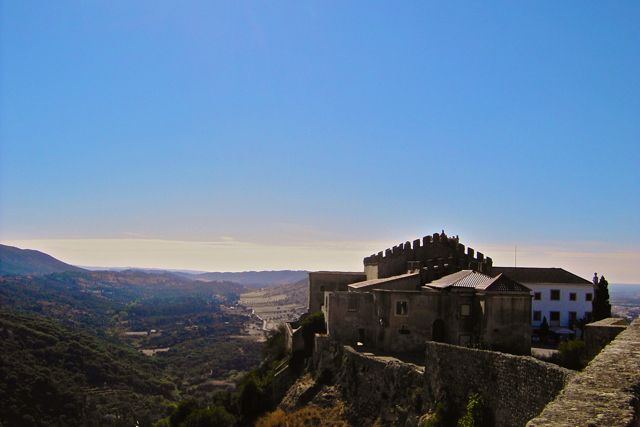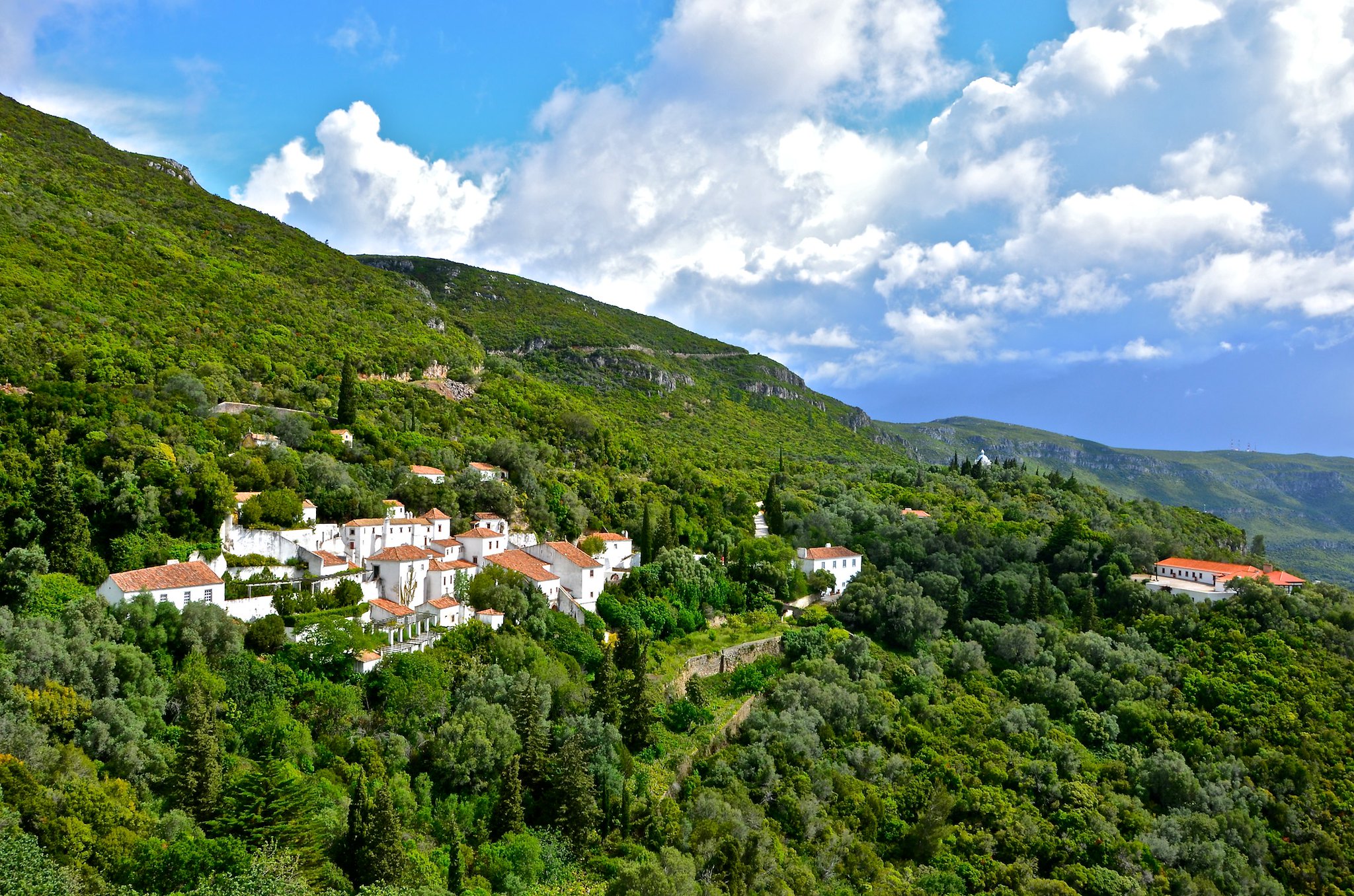Cooking up a Farewell Feast with Moscatel

 Parting is such sweet sorrow. That Bard really knew what he was talking about, didn’t he? It’s this way with Gabriella and Ryan’s announcement that Catavino is saying goodbye. My emotions were mixed at hearing the news. Initially, I was disappointed that I wouldn’t have my monthly outpouring of a favorite Portuguese dish, wine or region that I’m used to sharing with all of you through the lens of an expat living in America. And I thought of how much I would miss your comments at the end of my stories; the inspirations, the exchanges, the camaraderie of like-mindedness.
Parting is such sweet sorrow. That Bard really knew what he was talking about, didn’t he? It’s this way with Gabriella and Ryan’s announcement that Catavino is saying goodbye. My emotions were mixed at hearing the news. Initially, I was disappointed that I wouldn’t have my monthly outpouring of a favorite Portuguese dish, wine or region that I’m used to sharing with all of you through the lens of an expat living in America. And I thought of how much I would miss your comments at the end of my stories; the inspirations, the exchanges, the camaraderie of like-mindedness.
Then that other saying sunk in: the only constant is change. And it sounds like Gabriella and Ryan’s change of plans is a positive one. With that in mind we have only to be thrilled for them and grateful for the time they brought us Catavino. It’s a sweet sorrow indeed. Personally, I’m very happy to have stumbled upon Catavino one day. It’s given me a voice in an area I rarely have time to dabble in because of day-to-day responsibilities. It’s also increased my appetite to doing more of this type of writing—when and on where, I don’t know, but the seed has been planted. Then another thought sunk in: maybe I’ll finally start my own blog. But that’s still to be determined. Actually, I have a few personal writing projects I have been neglecting. Maybe I’ll focus on that instead. Who knows? But for now you can find me on Twitter @reddishSonia and on LinkedIn.
For my last Catavino recipe piece, I’m inspired only by the sweetness in life. By the sweetness that Gabriella and Ryan have shown me, the sweetness that you the reader has bestowed on me with each of your “likes” and “tweets” and “comments.” How could I translate this sweetness into Portuguese food and wine, I thought? The answer: Moscatel. My favorite is the Moscatel from Setubal. And this summer the Moscatel de Setubal Reserva 2006 was awarded first place in the 11th annual Muscats du Monde wine competition in Frontignan-la-Peyrade (Maison Voltaire) in the Languedoc Roussillon Region of France. Sweet!
But Moscatel, which I regularly have at home, is not simply a lovely drink to accompany my espresso or a piece of decadent chocolate. It’s also an excellent wine to cook with, especially when using gamier meats. In this piece, I want to pay homage to some of the places and people that have inspired my cooking with Moscatel. The first recipe that follows below was inspired by a duck dish at the Pousada de Palmela in the district of Setubal on a vacation to Portugal. Theirs was fancy, schmancy and delicious. Mine is a rustic roasted dish, refined only by the Moscatel. The second, a lamb dish, is inspired by Catavino reader Pedro Almeida who in my Beira Baixa: Roads Less Traveled piece suggested I visit the restaurant Pe de Vinho in Azeitao near Setubal, since I shared with him that my husband’s grandparents live nearby. His description of the restaurant’s Moscatel and honey smothered lamb made my mouth water. I have yet to try it, but I couldn’t wait, so I concocted my own recipe here at home. The third one pays tribute to one of my favorite Connecticut restaurants, The Schoolhouse at Cannondale, not too far from where we live. It’s not Portuguese, but it offers up a hot chocolate that I’m certain will delight anybody (young or old) no matter where they hail from on the globe. There are traces of honey and candied zest in it topped with homemade marshmallows. In my version, I created a hot chocolate spiked with Moscatel, which always leaves hints of orange and honey on my tongue. Since I’m not a very good baker, I stayed away from attempting to make the marshmallows. But you can purchase some or finish the chocolaty elixir off, as I like to do, with a dollop of whip cream and flurries of cocoa powder.
Cheers to Gabriella and Ryan’s new beginnings—and a happy holiday season and New Year to everyone!
It’s truly been a pleasure and privilege to write for Catavino.
Muito obrigada,
Sonia Andresson-Nolasco
 Duck Moscatel
Duck Moscatel
Inspired by Pousada de Palmela
Ingredients:
1 duck
1 head of garlic
6 shallots
1 large onion
1 large lemon
1 large orange
Fingerling potatoes
Red young potatoes
Fresh rosemary
Fresh parsley
2 cups of Moscatel
1 cup white dry wine
Olive oil
Black pepper
Red pepper flakes
Garlic powder
Dry rosemary
Preparation:
Day Before: Wash the duck and cut off excess fatty skin. Slice the onion and cover the bottom of a baking proof tray with it; make sure the tray is large enough to accommodate the duck and the potatoes. Place the duck on top of the onions. Sprinkle the salt, garlic powder, black pepper and red pepper flakes on duck to taste. Squeeze on it the juice of the lemon and orange, including into the carcass and stuff it with a couple of whole garlic cloves, rosemary sprigs and a couple of shallots cup lengthwise. Scatter the rest of the garlic cloves and shallots around the duck, leave some of the garlic with its skin on because when the dish is done, it’s a treat to squeeze the roasted garlic out and use as a spread on toasted bread. In a separate bowl whisk the Moscatel and white wine and then pour over the duck and inside the carcass. Add a cup and a half of olive oil and marry all the ingredients by rubbing them together all over the duck. Cover the tray with foil and leave in the fridge overnight or at least a few hours before roasting.
Day of: Wash the potatoes and cut them lengthwise and leave skin on (since cooking with skin make sure they’re washed well). In a large bowl add salt to the potatoes to taste, garlic powder, olive oil and dry rosemary. Make sure the potatoes are covered in the mixture and set aside. Preheat the oven to 475 degrees or desired temperature depending on your oven, and place the duck in it covered with the foil for about 20 minutes and lower temperature to about 450 degrees. Remove from the oven and add the potatoes and put back in the oven without the foil this time. It’ll likely take about an hour and a half for the duck to roast. When the duck skin starts to look crispy, remove from the oven and turn the duck and bathe it with the marinade, and also turn the potatoes. Let it roast until the skin is crispy and potatoes start to get crispy at the edges, too. If the duck is still not crispy enough but the potatoes are or vice versa, remove either one and set aside covered with foil and place the item that needs more cooking back in the oven. Finish the dish with freshly chopped parsley. Note: if you like fruit with your gamey meat, you can add apples or figs to this dish, too. Wine: A Dao Jaen or Douro Tinta Roriz.
 Lamb Moscatel
Lamb Moscatel
Inspired by Pe de Vinho via Pedro Almeida
Ingredients:
1 Rack of Lamb
Red young potatoes
Dry oregano
Fresh rosemary
Fresh parsley
Black pepper
1 lemon
2 Table spoons of honey
2 cups of Moscatel
Garlic powder
Paprika
1 head of garlic
Olive Oil
Preparation:
Day Before: Season the lamb with the salt, garlic powder, paprika and black pepper to taste. Squeeze the juice of the lemon on both sides of the lamb rack in a baking tray large enough to accommodate the lamb and the potatoes. Drench with one and half cup of olive oil (or to taste) and a generous amount of dry oregano. Reserve a few drops of the lemon juice and add to a small bowl, along with the honey and the Moscatel. Whisk all the ingredients together and pour over the lamb. Add the rosemary sprigs and garlic cloves to the tray and cover with foil and let it sit in the fridge overnight or a few hours before roasting.
Day of: Wash the potatoes and cut lengthwise with skin on. Season with salt and garlic power to taste and cover with olive oil and set aside. Preheat the oven to 475 degrees or according to your oven and add the potatoes to the tray. Place in the oven, roast for 10 minutes and lower to 450 or 400 degrees. When the rack of lamb is showing some charring, remove and turn and then place back in the oven. Roast again until the lamb shows color on the other side. Keep in mind that lamb is best served medium, so don’t overcook. You can use a thermometer to help. Insert away from the bone; should be ready at 140 degrees. Another trick is to heat up a skillet and quickly char both sides of the lamb before putting back on the tray and in oven; this seals up the moisture in the meat. If the potatoes aren’t crispy yet, remove the lamb and place on a cutting board covered with foil. Let it rest while the potatoes finish. Once the potatoes are done, remove and set aside. Cut the rack of lamb into individual chops and add back into the tray to smother in the sauce and serve with chopped parsley. Wine: An Alentejo Syrah or a Setubal Castelao.
 Hot Chocolate Moscatel
Hot Chocolate Moscatel
Inspired by the Schoolhouse at Cannondale
Ingredients:
1 3.5 oz of semi-sweet bar of chocolate (I used Pure Icelandic Chocolate)
2 cups of milk
4 Tablespoons of Moscatel (or to taste)
Whipped Cream
Cocoa Powder
Preparation:
Chop the chocolate bar and melt in a cup of simmering warm water. Once it’s melted add the Moscatel. Boil the milk and add to the melted chocolate. Pour into mugs; add whipped cream and cocoa powder to finish. Note: You can also let cool in the fridge and serve cold in the warmer months. Wine: A shot of Moscatel. The more Moscatel, the merrier!







